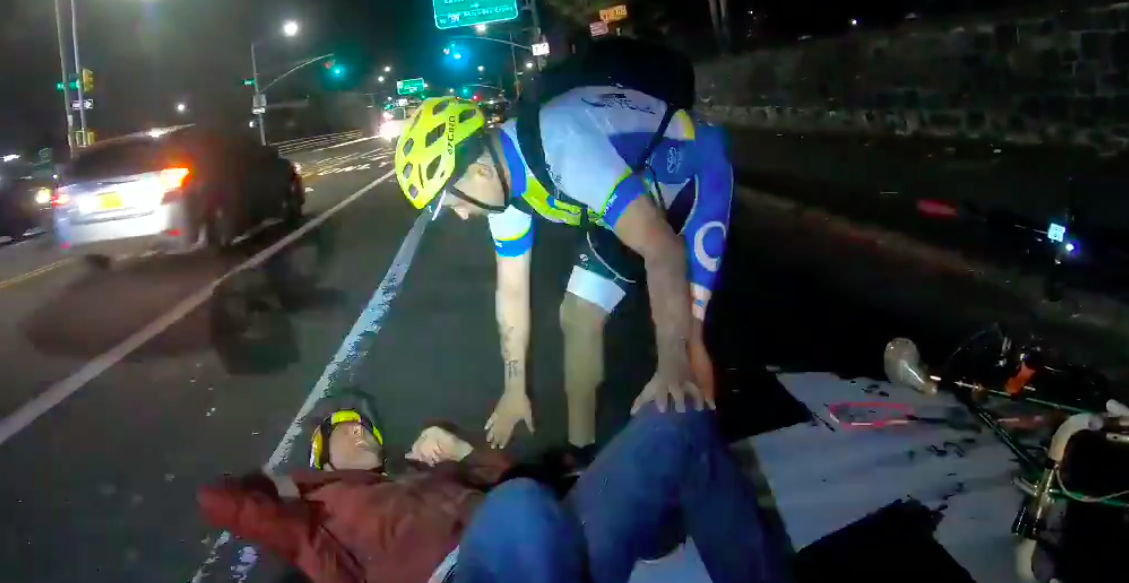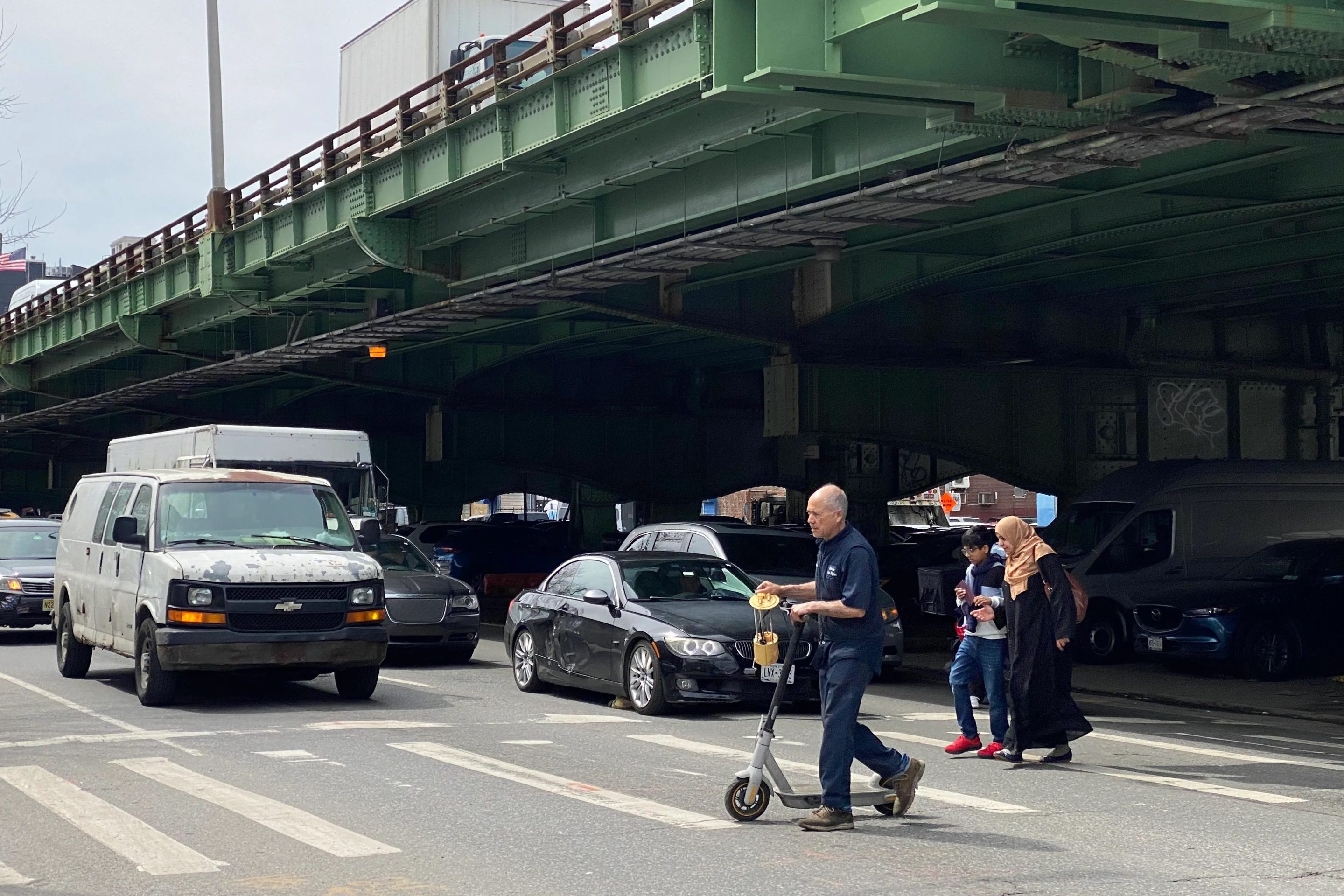Cops are hunting the hit-and-run driver who mowed down a cyclist, and injured two women in a car, on Greenpoint Avenue on Monday night — a horrific trail of carnage that the NYPD deemed not severe enough to warrant a full crash investigation.
Detectives from the 108th Precinct are investigating at least two back-to-back crashes caused by the speeding driver of a silver Toyota Sienna at around 6 p.m. on the dangerous strip between Starr Avenue and the Long Island Expressway — part of which was captured on another cyclist's video camera (viewer discretion advised).
The first crash occurred near Bradley Avenue when the reckless Sienna driver slammed into a black SUV with two passengers, both of whom were injured, though only one was taken to Elmhurst Hospital, the FDNY said.
Moments later, the fleeing driver hit the 36-year-old cyclist, who was waiting at the red light, in the bike lane, at Borden Avenue, which parallels the LIE.
Cops said he suffered "a back injury," and FDNY confirmed he was also taken to Elmhurst Hospital. None of the injuries is believed to be life-threatening. The NYPD's elite Collision Investigation Squad was not summoned. Such investigations are only triggered in fatal crashes or crashes that cause serious injuries — which are a tiny percentage of the roughly 225,000 crashes that happen every year.
The importance of the CIS should not be underestimated. The NYPD's record of catching hit-and-run drivers is phenomenally poor — as Streetsblog reported, only 9 percent of drivers who flee are ever caught and charged. But that number rises to more than 50 percent when the CIS is involved.
But the CIS is only summoned in cases of fatalities or injuries so series that they require life support. Transportation Alternatives has fought for more instances that qualify for a full investigation — and has asked the NYPD to encourage police captains to invoke their power to call in the CIS, even if a crash is not life-threatening.
"CIS can respond to any crash," said Marco Conner, the group's co-deputy director. "We believe the CIS should have responded in this case."
Without the CIS, the NYPD does not often issue criminal charges to drivers for violation the state's right-of-way law, known as 19-190 after its section of the city administrative code. That refusal to charge drivers criminally may violate state law, which requires the NYPD to investigate crashes to determine if any violation occurred, Conner said.
"By not sending the CIS, they are precluding a criminal right-of-way charge, which we believe violates state law," Conner said.
The NYPD has refused attempts by the City Council to expand the staffing of the CIS to enable it to investigate more crashes, but the agency has created a pilot program to send an "evidence collection team" to more crashes — what Conner calls "CIS light."
"The goal is to get them to investigate all of the two- to three-thousand crashes that cause serious, though not life-threatening, injuries," Conner said. "That will lead to more charges to hold drivers accountable and give victims the thorough investigation they need in order to make a claim."
In Monday night's crash, the speed of the driver — and the amount of carnage he or she caused in such a short amount of time — makes it clear that more needs to be done to protect the most vulnerable road users (and even passengers inside SUVs). But without a full CIS investigation, it is unclear if anything will be done.
Photos of the area of the first crash show exactly what the problems are (photo below).
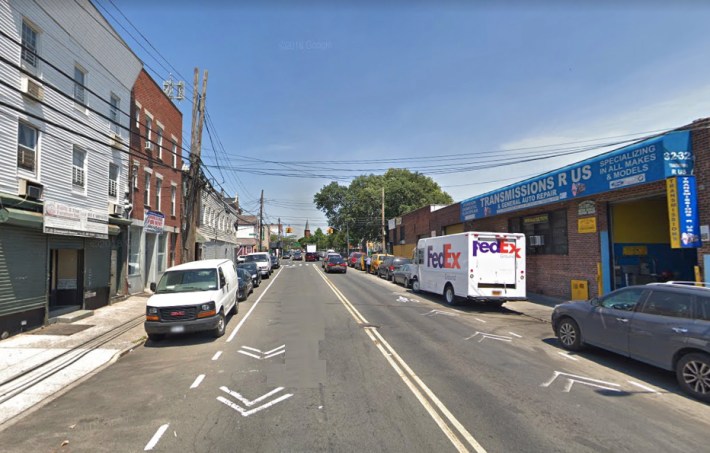
The problems include:
- The roadway is too narrow.
- There is too much space set aside for on-street car storage, which limits options for a safety redesign.
- Double-parking is common.
- Sharrows are not a form of bike infrastructure.
- The roadway is part of the route of the B24 bus.
The crash involving the cyclist occurred at a far more dangerous stretch of Greenpoint Avenue:
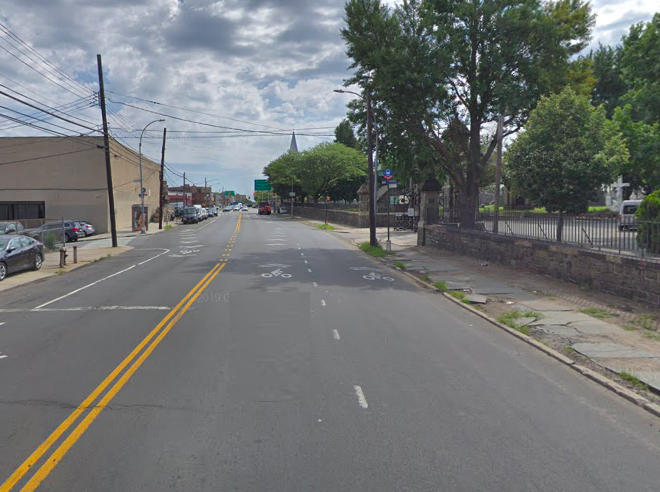
This is the stretch as drivers and cyclists approach the Long Island Expressway overpass. Instead of adding protected infrastructure, the city has painted twin shadows to direct cyclists intending to go straight to pedal into the middle of the roadway to avoid conflicts with drivers turning right onto the highway and with drivers who are also continuing straight (as the photo below shows).
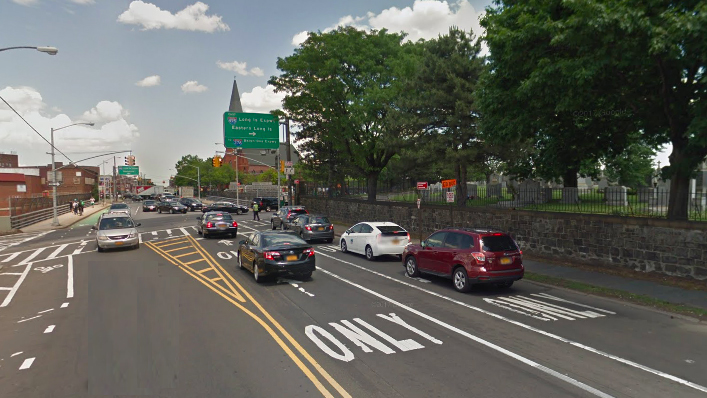
The sharrows eventually become a painted lane, but, as the 108th Precinct detectives are obviously concluding, paint is not a form of protection against a speeding driver hell bent on destruction.
Cyclists have long complained about the configuration, but the Department of Transportation has not fixed the area.
why is the bike lane on greenpoint avenue between the bridge and hunters point so damn crazy and dangerous? #bikenyc
— kitty😸americana (@kittyamericana) September 1, 2019
Indeed, it's a horrible murder strip (quite literally), and @NYC_DOT knows it. I expect to get killed there every single time I ride home from Brooklyn. It's harrowing, drivers there are 'speed drunk' from crossing Greenpoint Ave bridge at >60mph.
— Radlerkönigin (@radlerkoenigin) November 12, 2019
After initial publication of this story, DOT spokeswoman Alana Morales sent over the following statement:
DOT will study for additional street lighting at this location, and will look into potential improvements for the bike lane.
